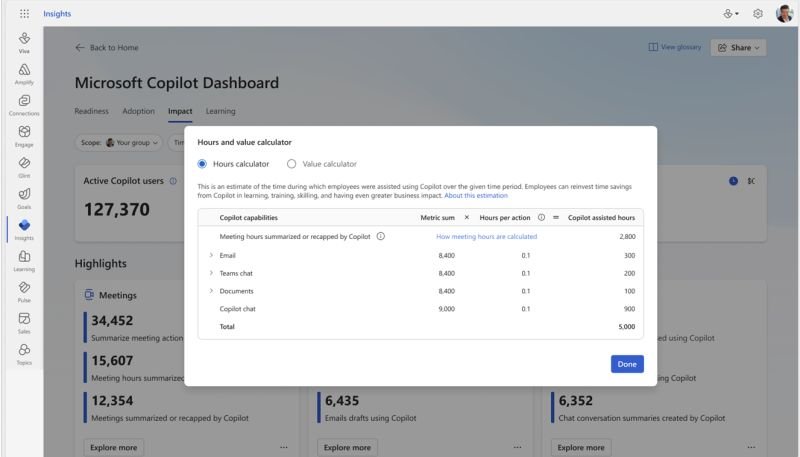How should you measure the impact of Microsoft 365 Copilot?
Microsoft offers tools that enable you to understand where Microsoft 365 Copilot is being used and impacting work within your business. As an example, in the Copilot Dashboard, you will soon be able to see how Teams meeting recaps and summarization are being used to boost work. This update will start to roll out to General Availability in September.
However, while hard numbers in terms of Copilot usage are important, they cannot paint the full picture, and they should be just one part of your understanding of the impact of this tool across your organization.
1️⃣ There may be measured impacts beyond the data Microsoft can see. For example, how does Copilot impact your employee satisfaction, does it impact team tenure or vacancies, and how are metrics such as revenue or case resolution impacted?
2️⃣ The subjective aspects are important too. How does Copilot fit into the story of your organization, or, perhaps more importantly, how would not investing in AI at this critical time for this new technology impact the picture of your business?
3️⃣ Understand with the numbers, but color the picture with the stories. The individual experience of users is important too. Copilot may turn a 2-hour job into something that takes 30 minutes, but what happens to that saved time, and what does it mean to the individual? The overall impact of Copilot is made up on lots of individual stories as everyone uses generative AI tools slightly differently.
Building a framework for understanding the impact of an investment in Copilot is an essential step from day one. You must have clear objectives and a deliverable plan to measure against them. Part of this will likely involve Microsoft's reporting tools but probably will also extend into other areas that are unique to each business.
❓ What metrics or other types of measures have proved most important to understanding your business' Microsoft 365 Copilot impact?
First published on Linkedin 06/30/2025 -> click here to view

